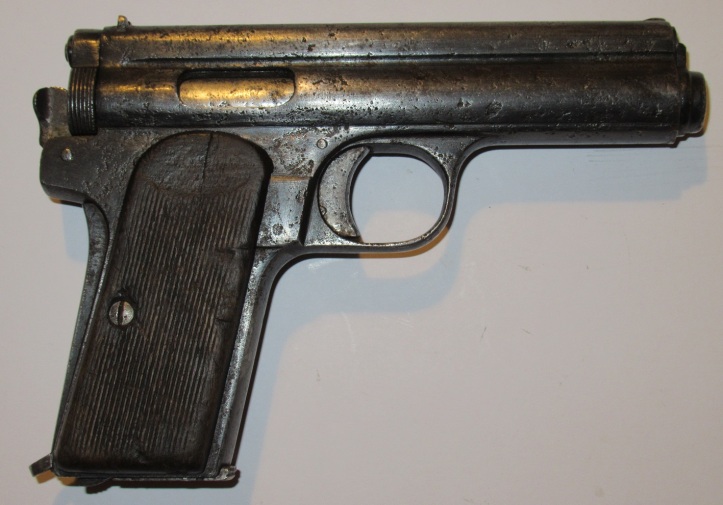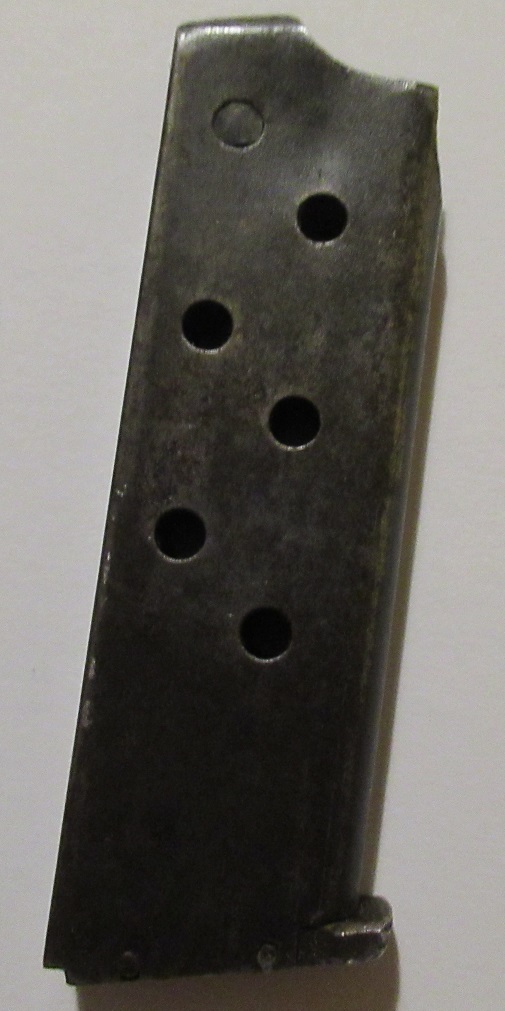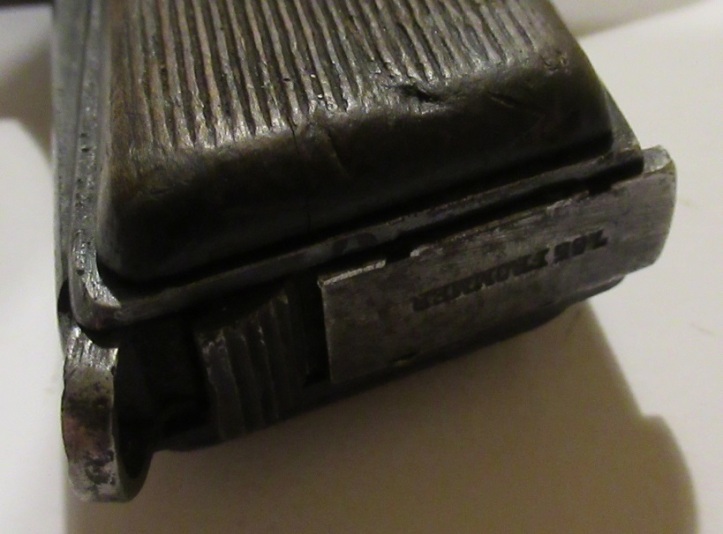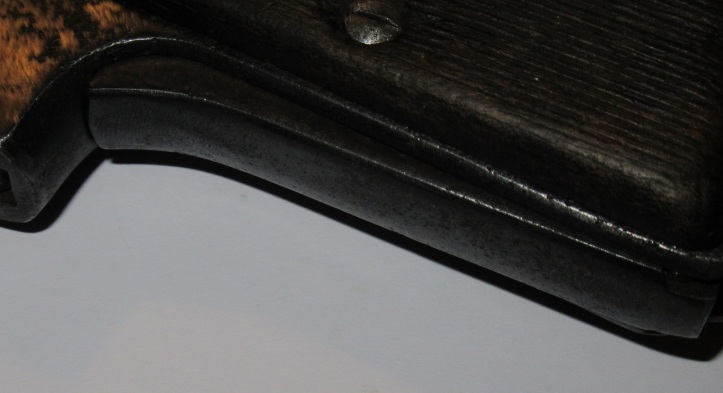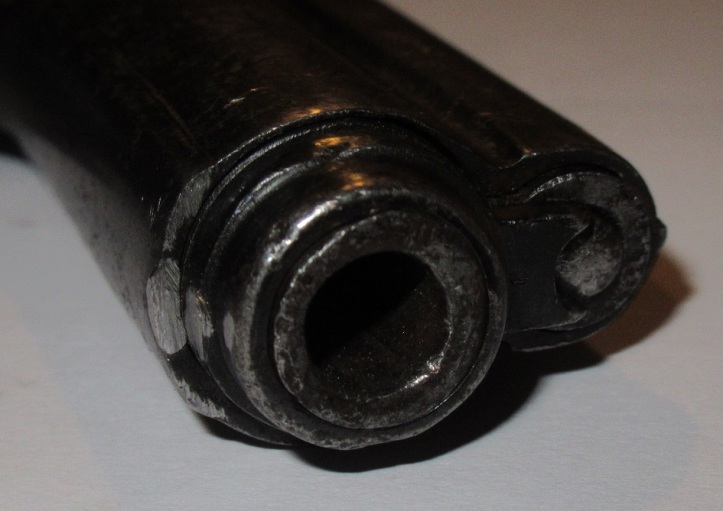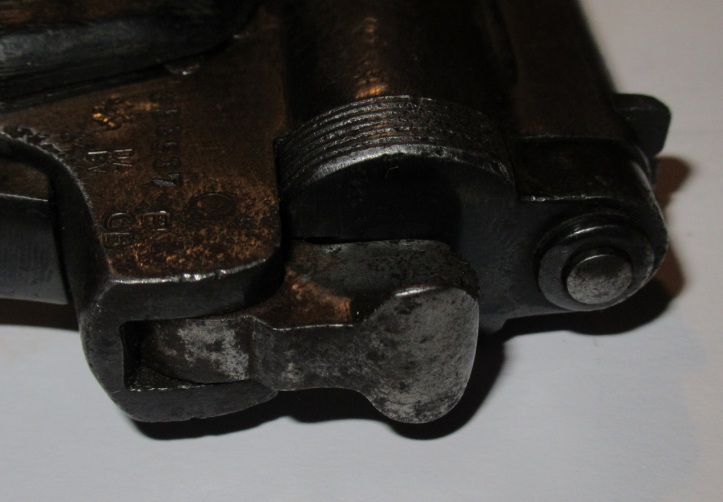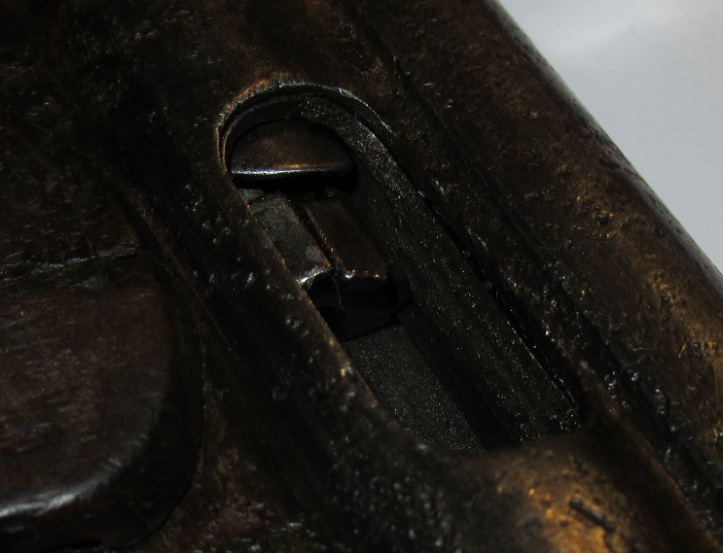We take a detour from the British Empire today to look at a curious little automatic pistol used by the Austro Hungarian Empire. The Frommer Stop was designed by Rudolf Frommer in 1912 and despite being a .32, it uses a locked breech and long recoil system. The breech is locked by a rotating bolt that locks into recesses in the barrel extension. The operating sequence goes something like this: When the cartridge fires, the bolt and barrel are locked together, and recoil rearward for a distance that is greater than the length of the cartridge. The barrel and bolt each have their own recoil springs, housed in the spring tunnel on top of the frame. At the end of the rearward travel, the bolt is held back by the bolt catch, and the barrel is free to return, powered by its’ recoil spring. As the barrel returns forward, it pulls away from the bolt, causing the bolt head to rotate and unlock. The fired case is held against the bolt face by the extractor, and the barrel actually pulls away from the case, not the other way around. As the case clears the chamber, an ejector kicks it out the ejection port. When the barrel returns all the way forward, it trips the bolt catch and the bolt snaps forward, powered by its’ separate recoil spring. On its way forward, the bolt strips the next round from the magazine, and the gun is ready to fire again.
The pistol is interesting in having the recoil spring mounted above the barrel, but is still a small and compact design:
The pistol can hold seven rounds of its special Frommer .320 ammunition in its box magazine held in the grip of the pistol:
The magazine is released using a heel catch and also visible are the lanyard loop and the pistol’s calibre stamped into the bottom of the magazine:
The pistol has a grip safety that needs to be depressed to allow the pistol to be fired:
The pistol is notoriously difficult to strip and reassemble, a collar at the front of the pistol needs to be removed by depressing the top button and unscrewing the collar:
With this removed, the guide rod that runs the length of the pistol can be rotated to disconnect it from the bolt and allow this to be pulled out the back of the pistol. Looking at the back of the pistol the back of this rod can be seen above the external hammer:
With the back of the bolt pulled back, the seperate bolt head can be seen within the pistol:
This example is very heavily worn and it is hard to make out the markings. As far as I can tell from the serial number, this pistol was made for the commercial market in 1926. Like all the Frommer Stops, this pistol was made by FEG in Hungary and their name is marked across the top of the recoil spring housing- unfortunately this is very hard to read on this example due to condition:

There are both advantages and disadvantages to the long recoil system in a handgun. One advantage is that the weight of the gun can be less, as the heavy slide of a blowback operated gun is unnecessary. Also, the recoil energy is spread out over a longer time span, and is absorbed by more moving parts, so felt recoil to the shooter is less. Disadvantages are that there are more total parts in the gun, that require more complicated machining, and therefore the cost of the gun to manufacture is higher.
This is a fascinating little pistol and was to see service with both the Austro Hungarian and later the Hungarian armies through both World Wars. (example is deactivated)

